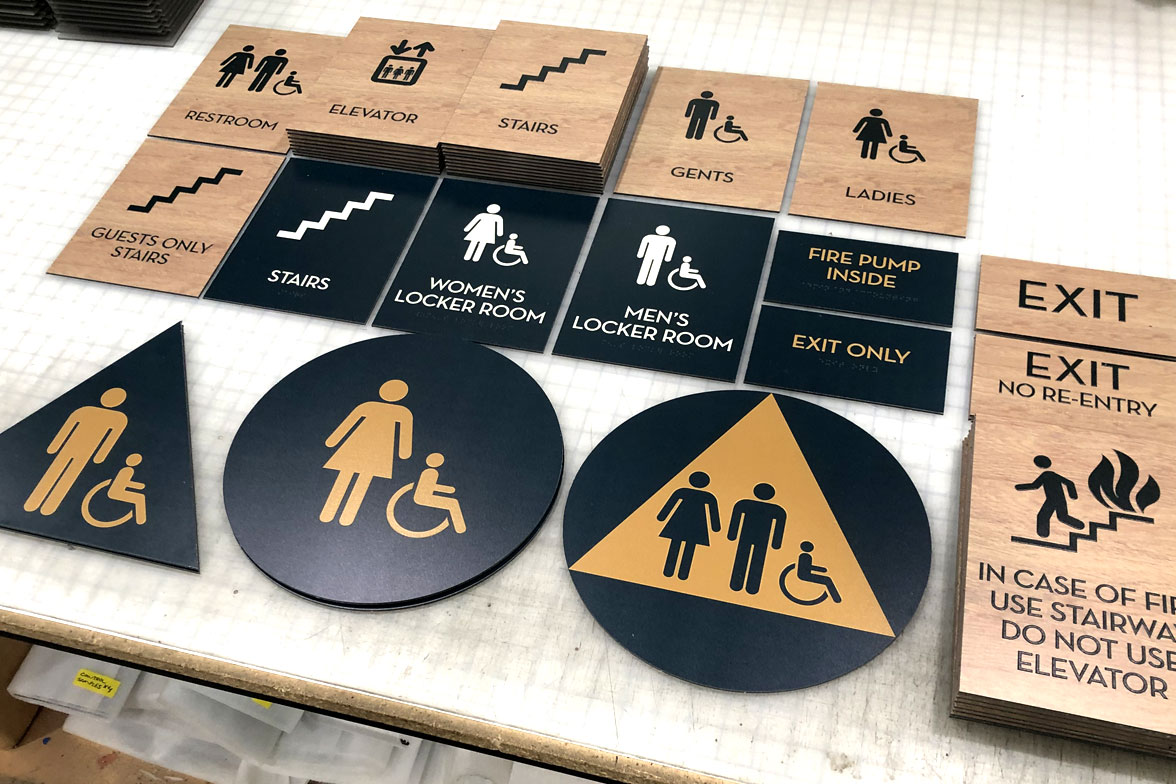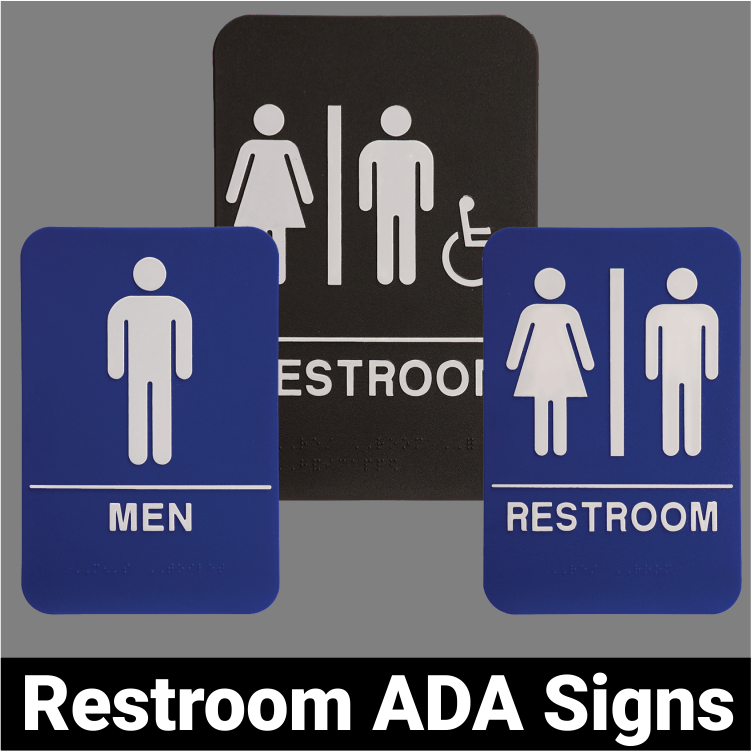The Effect of ADA Signs on Community Accessibility
The Effect of ADA Signs on Community Accessibility
Blog Article
ADA Signage: Making Sure Access and Conformity in Public Spaces
ADA signs plays a crucial role in guaranteeing accessibility and conformity within public rooms, significantly adding to a comprehensive setting for individuals with impairments. As we discover the nuances of ADA signs, from responsive features to develop complexities, it's critical to consider just how these aspects integrate to promote the legal rights of all customers.
Significance of ADA Signage
In contemporary culture, the significance of ADA signs extends past plain compliance with legal requireds to personify a dedication to inclusivity and availability for all people. These indicators are vital in developing environments where individuals with impairments can browse public spaces with the same ease and freedom as those without impairments. By offering standard and clear information, ADA signage makes sure that every person can access centers, solutions, and information without obstacles.
The relevance of ADA signage exists in its ability to boost the lifestyle for people with handicaps by advertising equivalent access. It gets rid of the barriers that could or else hinder their capacity to participate fully in neighborhood life. Furthermore, these indicators work as visible indications of an organization's commitment to variety and equality, reflecting wider social values that promote the civil liberties and dignity of all individuals.
Furthermore, ADA signage plays a vital duty in public security. By guiding individuals to leaves, bathrooms, and various other necessary facilities, it makes sure that all individuals, regardless of physical capability, can evacuate safely during emergency situations. In recap, ADA signage is not simply a regulatory demand yet an effective device for promoting a equitable and comprehensive society.
Key Components of Conformity

Positioning is vital; indications have to be mounted in areas that are reachable and easily visible. Generally, signage should be installed between 48 and 60 inches from the ground to guarantee accessibility for both standing and wheelchair customers. Tactile elements, such as Braille, are necessary for individuals with visual problems, supplying critical information in a non-visual style.
High-contrast colors in between the message and history are required to improve readability for individuals with low vision. The ADA mandates details comparison proportions to guarantee clearness. In addition, personality dimension is a crucial factor to consider, with minimal elevation needs dictated by the viewing range to make certain readability from various angles.
Design Considerations for Accessibility
Designing easily accessible signage calls for a meticulous technique to guarantee it satisfies the demands of all users, particularly those with specials needs. The dimension of the message is similarly important, with ADA guidelines suggesting a minimal elevation based on viewing distance to make certain readability.
Contrasting shades in between text and go to my blog background are vital for exposure, particularly for individuals with visual impairments. Additionally, tactile components, such as Braille and elevated personalities, are vital for individuals that are blind or have reduced vision.
Moreover, the placement of signage plays a significant duty in accessibility. Signs need to be mounted in places that are unblocked and quickly reachable. Ensuring that signs is installed at suitable elevations and angles makes it possible for all individuals, consisting of those using wheelchairs, to communicate with them successfully.
Typical Mistakes to Stay Clear Of

An additional prevalent mistake is the incorrect positioning of signage. ADA guidelines define precise elevation and location demands to guarantee that indicators are reachable and conveniently visible by all individuals, consisting of those using mobility devices. Overlooking these guidelines not only interferes with availability yet likewise risks non-compliance with legal requirements.
Furthermore, not enough contrast in between message and background is a regular oversight. Appropriate contrast is necessary for readability, especially for people with reduced vision. Designers in some cases pick shades that are visually attractive yet lack the needed contrast, making the text difficult to determine.
Lastly, some designers stop working to integrate responsive components, such as Braille, which are essential for individuals who are blind. Leaving out these functions not just causes non-compliance with ADA regulations but likewise restricts gain access to for a segment of the populace that relies upon responsive details.
Future Trends in Signage
Improvements in innovation and enhancing awareness of inclusivity are forming the future patterns in signage design. Digital signs, for instance, is developing to include interactive attributes and real-time updates, which can be important in providing vibrant info in public spaces.
An additional emerging fad is the use of augmented fact great site (AR) to enhance customer experience. AR-enabled signs can overlay electronic information onto the physical atmosphere, providing aesthetically damaged individuals with auditory or haptic responses. ADA Signs. This technology not just enhances accessibility however additionally produces an interesting experience for all users
Sustainability is likewise a substantial variable affecting signage patterns. Green materials and energy-efficient illumination remedies are being prioritized to line up with international environmental goals. In addition, developments in materials scientific research are leading to the advancement of even more weather-resistant and long lasting signs.
Conclusion
ADA signage plays an essential role in ensuring access and compliance within public areas by including responsive elements, high-contrast colors, and tactical placement. The adherence to ADA requirements not only promotes safe navigation for individuals with impairments however likewise represents an organization's commitment to variety and inclusivity. By staying clear of common blunders and welcoming future trends, public areas can continue to advance these values, guaranteeing that the legal rights and dignity of all individuals are valued and promoted.
ADA signs plays an essential role in guaranteeing ease of access and compliance within public rooms, dramatically adding to an inclusive environment for individuals with handicaps. As we explore the subtleties of ADA signage, from tactile attributes to create ins and outs, it's important to consider how these components integrate to promote the legal rights of all users.In modern culture, the importance of ADA signage expands beyond mere conformity with legal mandates to symbolize a commitment to inclusivity and accessibility for all people. By supplying clear and standardized information, ADA signs makes sure that everyone can access centers, services, and details without barriers.
ADA signs plays a crucial role in ensuring availability and compliance within public areas by incorporating responsive elements, high-contrast shades, and strategic positioning. (ADA Signs)
Report this page